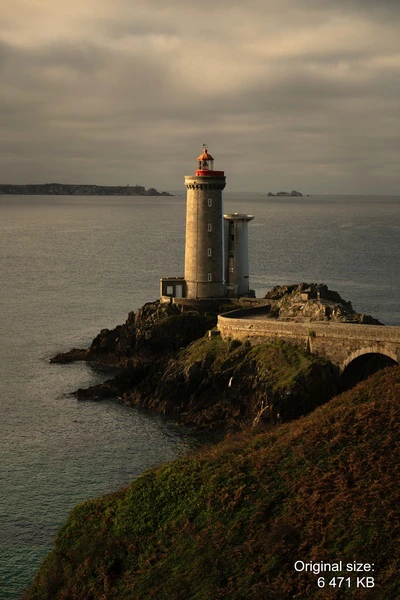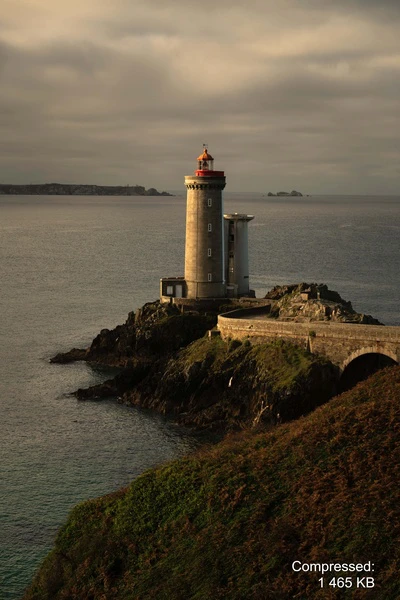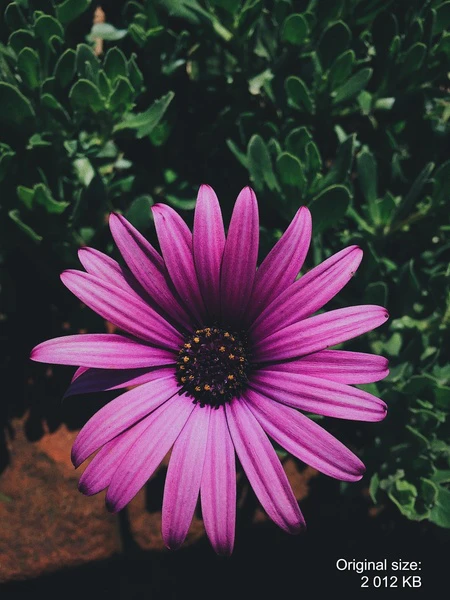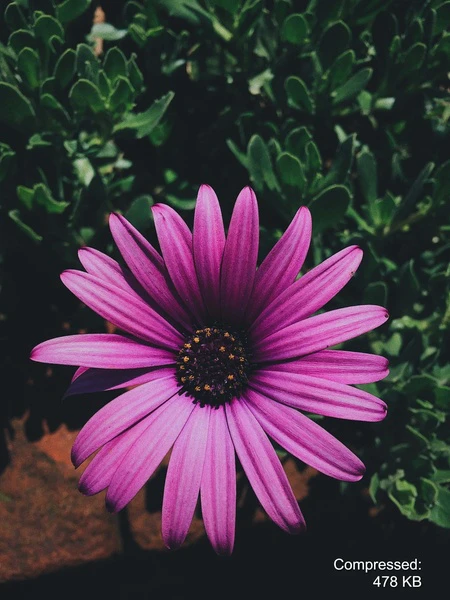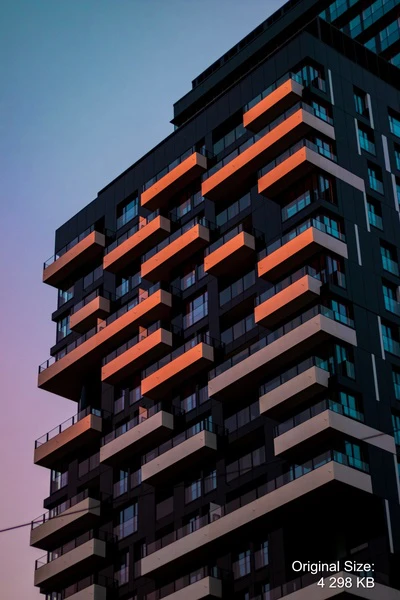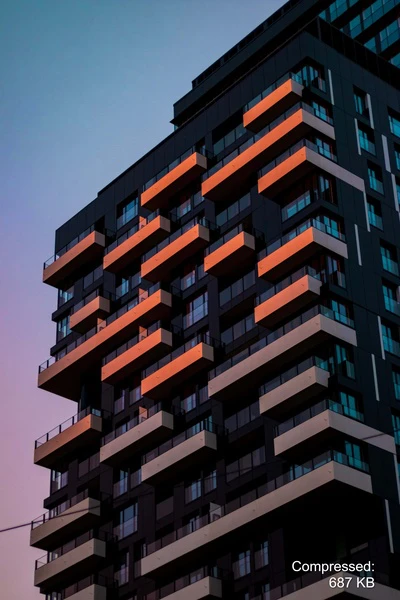Compress Image Size. Key Information
by  Lina Thorne • Updated · Posted in Compress Photo
Lina Thorne • Updated · Posted in Compress Photo
Let’s start with some basics. Any file, including an image, has a size. A file size is measured in megabytes and kilobytes. There are 1024 kilobytes in 1 megabyte.
A size of an image depends on various factors:
- Pixel dimensions. Your photos are composed of pixels. The bigger the number of pixels, the bigger will be the size of your image in megabytes. For example, a JPEG image with the pixel dimensions of 6000x4000 may have a size of around 10 MBs. If 150 pixels are removed from this image, then its size will be reduced by around 75 kilobytes.
- Quality and details.The file size of your image is also determined by its quality. If your high-resolution photo has a lot of details and colors in it, it will be of a bigger size.
- Format. More common formats like JPEG and GIF will produce images of more manageable size than any of the raw formats. That’s because raw photos contain a lot more information.
Why You Should Compress Images for Your Website: Five Key Points
Have you ever checked what the load time of your web pages is? In other words, how long does it take for a webpage of your website to fully load? The ideal time for a webpage is around 2 – 2.5 seconds. 3 seconds can sometimes be okay, but a considerable number of people won’t wait this long. Yes, you got it right.
If it takes longer than 2 seconds for a webpage to load, people will leave your website and go elsewhere.
This will have a negative effect on your websites performance; not to mention that if you sell a service or a product, you will basically lose potential customers. You need to make sure that your webpages load quickly if you want to keep precious visitors on your website.
Okay, so, what if you checked the load time and found out that it takes longer than 3 seconds? Do you have a lot of visual content on that webpage? If the answer is yes, the load time might be long because you didn’t compress your images before publishing them on your website. Below, you will learn more about the connection between image compression and optimizing your website and, thus, increasing its traffic.
Here are 5 reasons why you should compress photos for your website:
- You will make your images load faster. When you compress a photo, you make its file size smaller. Thus, it will load faster, and a visitor of your website will see it quicker. This will surely have a positive impact on user experience and your search engine optimization. At the end of 2021, Google included a set of metrics called Core Web Vitals in its search algorithm. One of the three metrics it tracks is LCP (Largest Contentful Paint ). In simple words, this is how much time it takes for the main content on a web page to fully load. If it takes 2.5 seconds or less, your webpage will be assessed as good.
- Image uploading will take less time. The larger the file size, the longer it will take you to upload images onto your website. Compression can save you some extra minutes that you can use for more important things other than waiting. If you want to compress images for you website, here are some optimal sizes for various types of images that you can make use of: not more than 1MB for banners, backgrounds and any other large images, 500-600 kB for images in your product gallery or portfolio, 300 kB for small graphics.
- Compressed images are more space-efficient. Thanks to photo compression, your images will have a smaller file size. Thus, they will take up less storage space not only on your website, but also on your hard drives or in a cloud storage if you keep local backups of them. Since visual content – be it images or videos – usually takes up much more space than, say, text, it makes perfect sense to reduce its file size. At the same time, your visual content still needs to look good, so it might also be vital for any quality loss to be unnoticeable. Fortunately, compressing images can help you achieve both of these things.
- Image compression doesn’t change pixel dimensions of your images. If you want to create a slideshow or a gallery that contains your photo works or images of your products, it would be better if your images have similar pixel dimensions. This way, they will look harmonious. Thus, it might be important for you to know that after compression the pixel dimensions of your images won’t change. However, you need to be aware of the fact that in some cases image compressor might change the resolution of your image. For instance, if your original image has a resolution of 300 dpi, then your compressed image might have a resolution of 96 dpi. If changing the photo size is your priority, you should use a photo resizer instead.
- Compressed images won’t use up a lot of mobile data. When people visit your website using mobile internet, their phones download data, including images, from your website. This will use up some of their mobile data. Usually, mobile internet has a limit for this. For example, it can be 5 GBs per month. If a person exceeds this limit, they won’t have access to the internet until pay some extra money. No one is going to be happy about this. If your website has images of large file size, this will use up a decent amount of mobile data of your website’s visitors. Thus, you should compress photos if you want people to have a positive user experience.
As you can see, it’s important to check the file size of your visual content before uploading it to your website. Even when image compression is done, it might still be a good idea to check what size your files have. Otherwise, you might accidentally upload large-sized images which will drive visitors away, and that will impact your website’s performance and ranking in a negative way.
Can image quality degrade after image compression?
The way compression works is some redundant data, including pixels, is removed from your image to reduce its file size. Thus, when you compress an image, you reduce its quality to some degree. But you will be able to see these changes only if you really zoom in on an image. Image compression should be avoided if you want to, say, print a photo. But it’s a perfect way to reduce the file size of images that you want to post online. Image compression has a huge number of benefits if it’s done properly.
Compress Photos for Social Media
You might be under the impression that when it comes to posting visual content on social media, the bigger your image is, the better. But this is wrong. Such platforms like Facebook, Instagram, X, Pinterest, LinkedIn have their size limitations.
If you upload a large-sized image of high resolution to any of these platforms, they will make it fit their size requirements whether you want it or not. Except that their image compressors work automatically, and they don’t care about your image looking as good as possible. They need to handle huge amounts of visual content that’s uploaded on a daily basis. So, they want your image to occupy as little storage space as possible. Compression helps them with that. But because of this automatic compression, your uploaded images can look as if they have a terrible quality.
For instance, according to the Instagram requirements the width of images should vary from 320 px to 1080 px. Once you upload a photo wider than 1080 pixels, it will be compressed automatically, and some quality loss will unavoidably occur. When you post an image smaller than 320 px, it will be enlarged. Both of these will result in your image looking blurry, unsharp and pixelated. In some cases, you can avoid these problems by using an online image upscaler.
If you want to make sure that your visual content looks good once you post it on your social media account, you should compress your photos as well as resize them, so they meet the necessary size requirements.
Here are the recommended images sizes for popular platforms:
- Facebook – 1200 x 630 px;
- Instagram – 1080 x1080 px (square images), 1080 x 1350 px (portraits), 1080 x 608 px (landscapes);
- X - 1024 x 512 px;
- LinkedIn - 1200 x 627 px;
- Pinterest - 600 x 900 px;
- YouTube - 1280 x 720 px.
Here is the list of free online tools for compressing images of different formats:
Compress Photos to Meet Email Size Limits
It’s better to compress images before sending via email to ensure faster sending and better bandwidth. It will take more time for a large-sized image to upload. As a result, your email may bounce back or get marked as spam. This can be avoided if you reduce the file size of your images. It will make sharing them much more convenient.
Pretty much all mail services have a size limit for attachments. Usually, it’s around 10-25 MBs per letter. Thus, if you have several images of around 10 MBs, you will be able to send only 1 or 2 of them. The same goes for messengers. For example, WhatsApp allows you to upload a file that has a size no bigger than 16 MBs. So, if your image is bigger than this, you won’t be able to send it at all! Image compression can help you reduce the file size of your image from 10 MBs to 1 MB or less.
This way, you will be able to send from 10 to 25 images in a single letter. That’s quite a difference, right?
Summary
Image compression can be a great solution to several problems. First and foremost, you should never post high-resolution photos of a large size on your website, because they will take a long time to load and subsequently, slow down the loading speed of the entire webpage. People hate it when they have to wait for all the visual content to show up. If your website doesn’t load quickly, your visitors will go to your competitors, and you will lose your potential customers.
However, the smaller the file size of your images, the less space they will occupy on the server and the faster they will load. Therefore, it is essential to compress photos before publishing them on your website if you don’t want to keep your visitors waiting.
